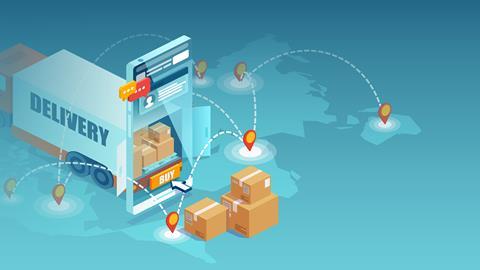From scalability to agility, nShift’s Mattias Gredenhag examines the four must-haves retailers need to consider when it comes to delivery
Multichannel and ecommerce retailers are under constant pressure to find new ways of attracting new customers and retaining those they already have while cutting costs.
They’ve invested in everything from SEO to on-site personalisation to encourage people to buy, but many seem quite happy to offer a substandard delivery experience after that. Why?
All too often, we see retailers putting together a delivery process piecemeal with disparate point solutions. This is risky, as each one can represent a potential point of failure.
The disruption this can lead to is costly – both financially and in terms of reputation – particularly at peak times when optimal performance is essential. Citizens Advice found that one in three UK shoppers had problems with deliveries during 2023’s peak season.
A joined-up ‘one-stop-shop’ approach, however, centred on a reliable delivery management platform, can improve efficiency and customer experience at every stage of the process. That means warehouses and distribution centres can handle greater throughput, while customers enjoy a better experience.
The ingredients of a great delivery strategy
Instead of breaking deliveries into different steps, retailers and warehouse operators need to think about the experience as a journey, which begins at checkout and ends either on the customer’s doorstep or with items that are returned to base and need to be resold.
In particular, they need to build end-to-end processes that are:
- Reliable – consistent performance is crucial. If any part of the process should fail, retailers can risk losing a customer’s loyalty.
- Scalable – processes must be able to scale to meet peaks and troughs in demand, supporting retailers at each stage of their annual and economic cycle.
- Agile – deliveries must be able to adapt to fluctuations in demand and customers’ needs. Retailers also need to easily onboard new carriers, such as zero-emissions providers or delivery lockers (also known as PUDO), which help them offer the options customers expect.
- Easily integrated – integrating the delivery experience and the carriers that support it with core business and ecommerce systems, such as CRM, shopping carts, and warehouse management, can improve efficiency, drive automation, and enable growth.
With these points in mind, the right delivery process will meet a retailer’s primary objectives: building the customer experience, improving efficiency and reducing costs.
It can ensure customers are given an appropriate range of delivery options, for instance, and keep them informed of the status of their delivery.
It can enable fulfilment teams to process more orders quicker and more cost-effectively. And it can make it easier for customers to return unwanted orders and help retailers retain more revenue from those returns.
Joined-up approach at the core
As we’ve seen, this process shouldn’t be a disjointed patchwork of different solutions from different providers.
Not only will such an approach make integration more challenging but the number of potential vulnerabilities also means a higher risk of failure somewhere along the way.
When every aspect of the delivery process centres on a robust platform, all the right information will travel with the delivery label, meaning retailers can track an item through each stage of its journey – from order through delivery to return.
- Find out more about how nShift’s one-stop-shop delivery management solution helps retailers differentiate through deliveries.
Mattias Gredenhag is the chief technology officer of nShift


















































